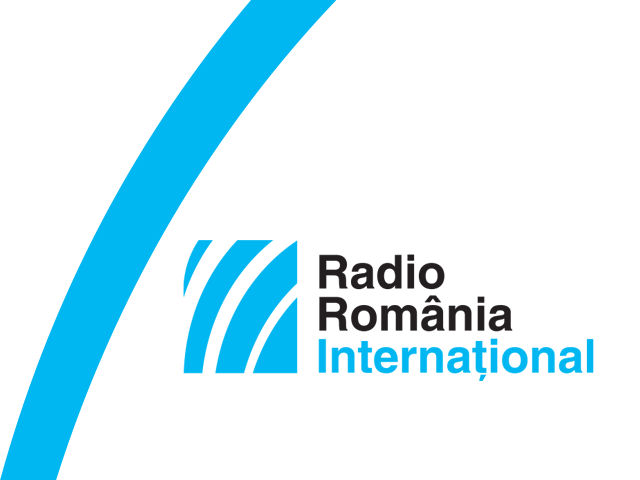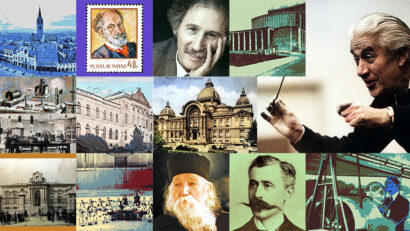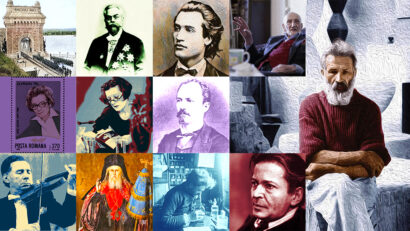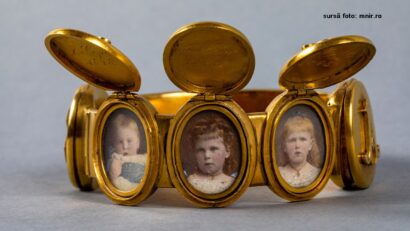Photographer Adolphe A. Chevallier
In the second half of the 19th century, photography spread rapidly in the Romanian space.

Steliu Lambru, 15.05.2022, 14:00
Foreigners and Romanians immortalized landscapes, people, places and everyday situations, in the first half of the 19th century. Romanian war photography is associated with names such as that of Carol Popp of Szathmary, who took part in the Crimean War of 1853-1856. Franz Duschek was the author of some of the oldest photographs of Bucharest. The photographer of the Romanian War of Independence from 1877-1878 was Franz Mandy, Ioan Spirescu introduced color photography, and Iosif Berman was, at the beginning of the 20th century, the father of Romanian photojournalism. Adolphe A. Chevallier, a photographer of Swiss-Romanian origin from the city of Piatra Neamț, made a name for himself among all these personalities.
Born to a Swiss father and a Romanian mother in 1881, in northern Moldavia, Chevallier decided, as a child, that he would become a visual artist. He studied photographic art in Lausanne, Switzerland, where he was sent by his father. He obtained a license as photographer of the Royal Court and opened a photography workshop in Piatra Neamț where he made photographs. Some of them became illustrated postcards. Professor Sergiu Găbureac and Ilie Gînga are the authors of the volume Chevallier, the photo-chronicler of the German lands.
One of the two authors, Sergiu Găbureac, referred to the support that Chevallier enjoyed in his profession: “A forestry engineer at the time, especially as Adolphe Chevallier – the father was called by King Carol I to return to the country to deal with the forestry area of Moldavia, did not have financial problems. What sets Chevallier apart from the multitude of photographers of the time? First of all, all the photographers of the time were focused on earning a living. Of course, Chevallier was also concerned about earning a living, but he was very inspired to take photographs of public interest. These photographs of public interest became, over the years, a real ethnographic treasure for researchers and even in his time Chevalier was very much appreciated. Many of his photos turned into postal messengers.
What did Chevallier photograph? Sergiu Găbureac structured his book into eight chapters in which he answers this question to the reader: In the chapter ‘On mountain paths he describes Mount Ceahlău, Rodna mountains, Bistrița valley. The chapter ‘Hearths of Light includes everything related to spiritual light, churches and monasteries in the area of Moldavia, reaching as far as Cernăuți where he received an order to make a set of photographs for the Romanian Patriarchate in 1938. In the chapter entitled ‘The Brosteni and Bicaz Crown Estates, the photographs we have are almost unique in their kind, since they capture the development of that particular area. Chapter 4, ‘The Royal family and Bicaz is yet another one-of-a-kind thing, and that because he was the only photographer accepted by the royal family when they took a group photo while being stranded in Bicaz during the first World fatality. Chapter 5 is very interesting, since it includes almost all daily trades of the Bistrita Valley dwellers. In Chapter 6, the traditional apparel is presented in all its splendor and beauty, not only the traditional apparel of Moldavia, but also that OF other regions across the country. With Chevallier we can eventually take a stroll around Piatra Neamt, in Chapter 7, as well as around other places, thanks to the document-images, given that quite a few of the edifices built at that time were brought down during the communist regime. Chapter 8 focuses on Romanias first scouts jamboree, which was held in Piatra Neamt.“
World War One was looming large over Europe around 1914. In 1916, Romania took sides as a belligerent country. As for Chevallier, he volunteered in the army. He had a stint with the Military hospital in Piatra Neamt, and continued to photograph.
Sergiu Gabureac once again:
Chevallier turned out to be much more patriotic than quite a few of the patriots of that time, when it comes to people involved in politics. Sometimes he was indignant at the way the Romanian issue was being dealt with. We have many letters and fragments that are illustrative of that. He had always asserted his Romanian origin and did not deny it even when he lay dying.“
During the inter-war years, in Greater Romania, Chevallier was thriving, personally and professionally. In 1925, he got married and his two daughters were born. However, the Second World War would change his life. After the war ended, in 1945 he returned to Bucharest, only to notice that the world was different.
Sergiu Gabureac explains:
He arrived in Bucharest and was certainly indignant at the fact that his profession was forcibly included in a handicraft cooperative. Such cooperatives of Soviet origin would crop up in all walks of life. He was a very free spirit, so he was totally against that, therefore chicaneries directed at him were quick to appear. Chevallier reached the conclusion that his place was no longer in Romania and retired in Lausanne, Switzerland, with his daughters.“
On April 23, 1963, after 13 years of Swiss exile, the photographer died in Baden, at the age of 81. A rich photographic work is his legacy, and his photo cliches are extremely sought after by collectors, even to this day. (LS, EN)






























